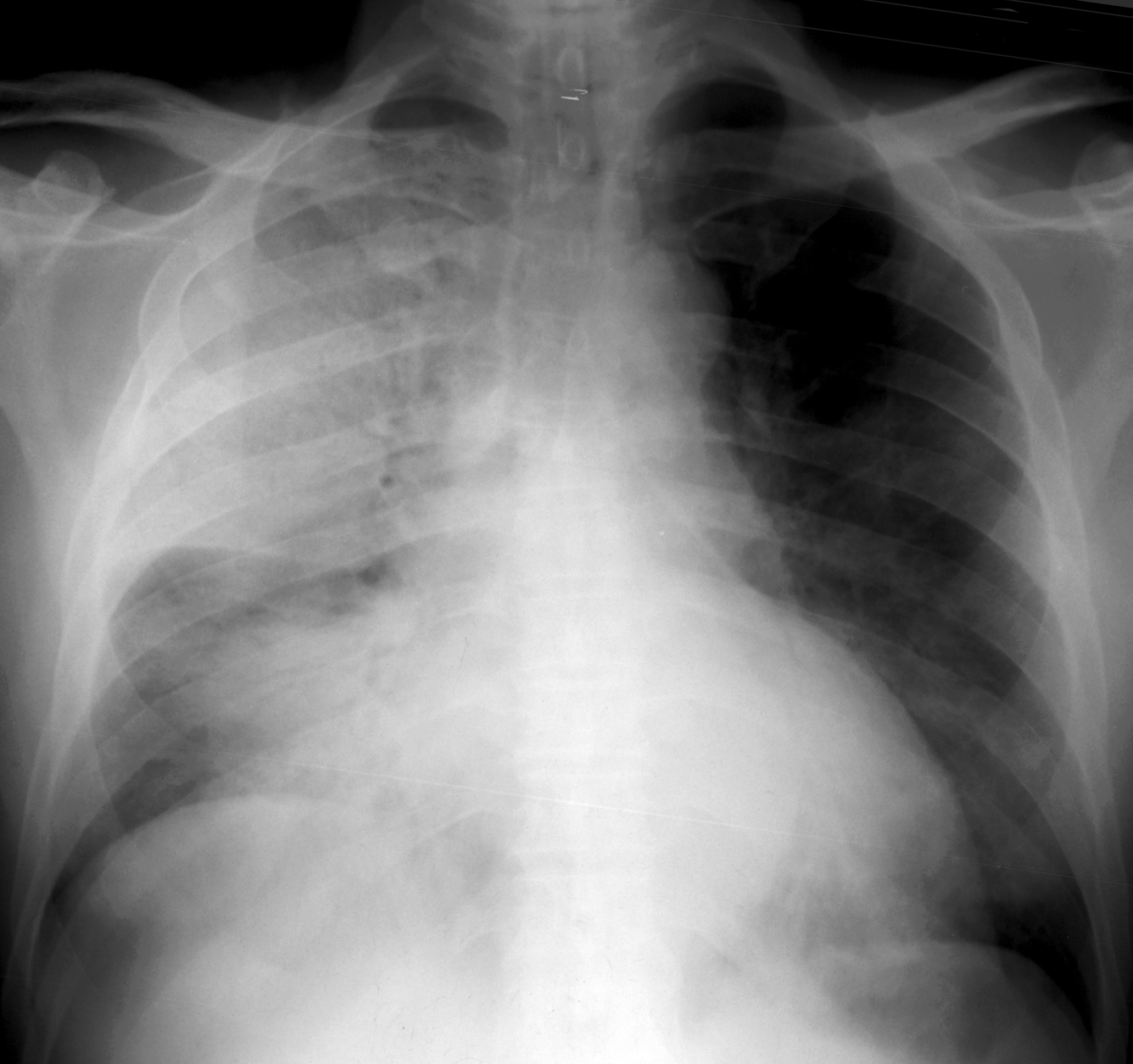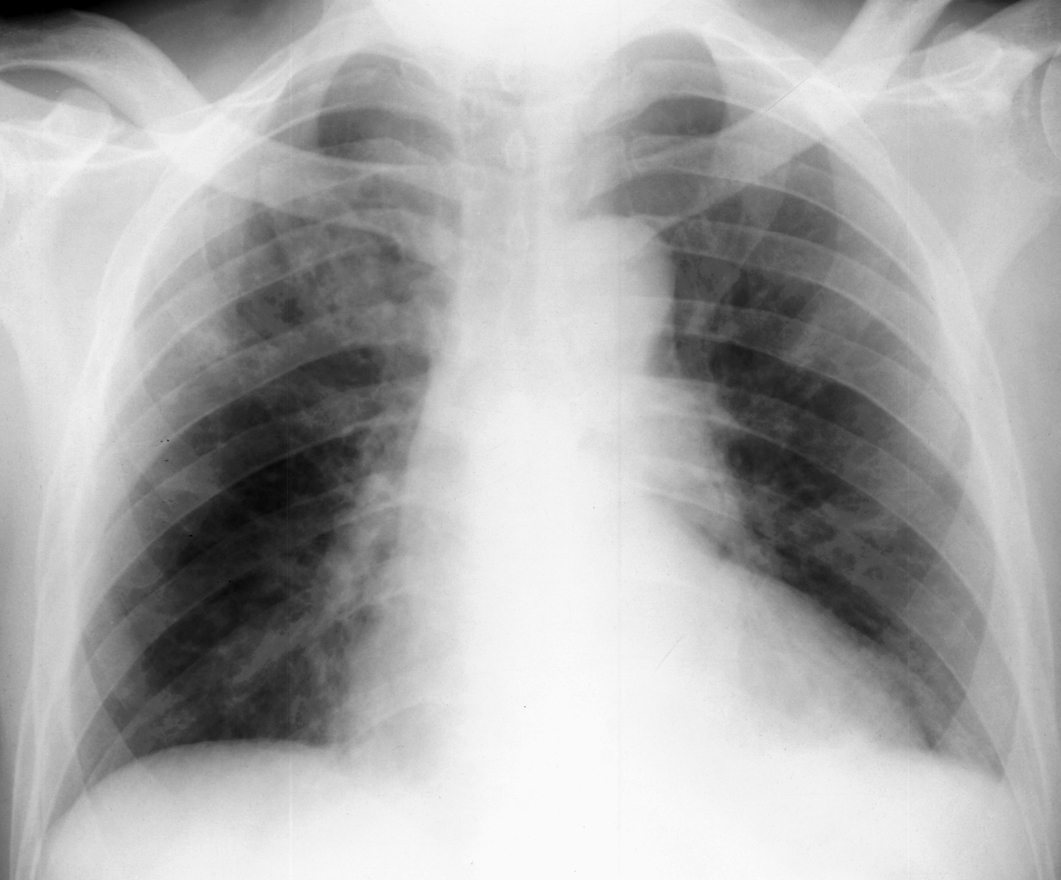ICU Chest Films > Fluid in the Chest > Pulmonary Edema > Patterns
Patterns of Pulmonary Edema
![]()
Typically, the radiographic appearance of pulmonary edema includes one or more of the following: cephalization of pulmonary vessels, Kerley's B lines peribronchial cuffing, bat wing pattern, patchy shawdowing with air bronchograms, and increased cardiac size. Generally, pulmonary edema is bilateral and may change rapidly. The radiographic appearance of the chest x-ray should also correlate with the central venous or pulmonary wedge pressure of the patient and clincal signs and symptoms of pulmonary edema.
Atypical patterns of pulmonary edema can represent a challenge for the radiologist. Pulmonary edema may be unilateral, lobar, miliary, or restricted to the lower zones of the lung. Pulmonary edema may assume any asymmetric or unusual distribution. Although gravitiy as been implicate as the culprit many other theories have been devised to explain the bizarre patterns of pulmonary edema noted. Miliary edema is often considered a normal transitory phase in the development of full scale edema. Lobar or lower zone dema is found in patient suffering from chronic obstructive pulmonary disease with predominate upper lobe emphysema.
One method of differentiating pulmonary edema from other causes of lung opacities is the gravitational shift test. The patient is kept in the supine position for two hours before a chest film is taken. Then the patient is left in the decubitis position with the suspicious hemithorax in the independent position for 2 to 3 hours before a second film is taken. In 85% of patients with pulmonary edema there is a shift in the opacity as opposed to 80% of patient without pulmonary edema who had no shift.


The patient on the left suffered from unilateral cardiogenic pulmonary
edema. This entity is unusual and thought to be the result of an enlarged
left ventricle compressing the left main pulmonary artery paradoxically
shielding it from increased hydrostatic pressures. Often pulmonary edema
is diffcult to differentiate from pneumonia until the patient has been
treated with diuretics (right).